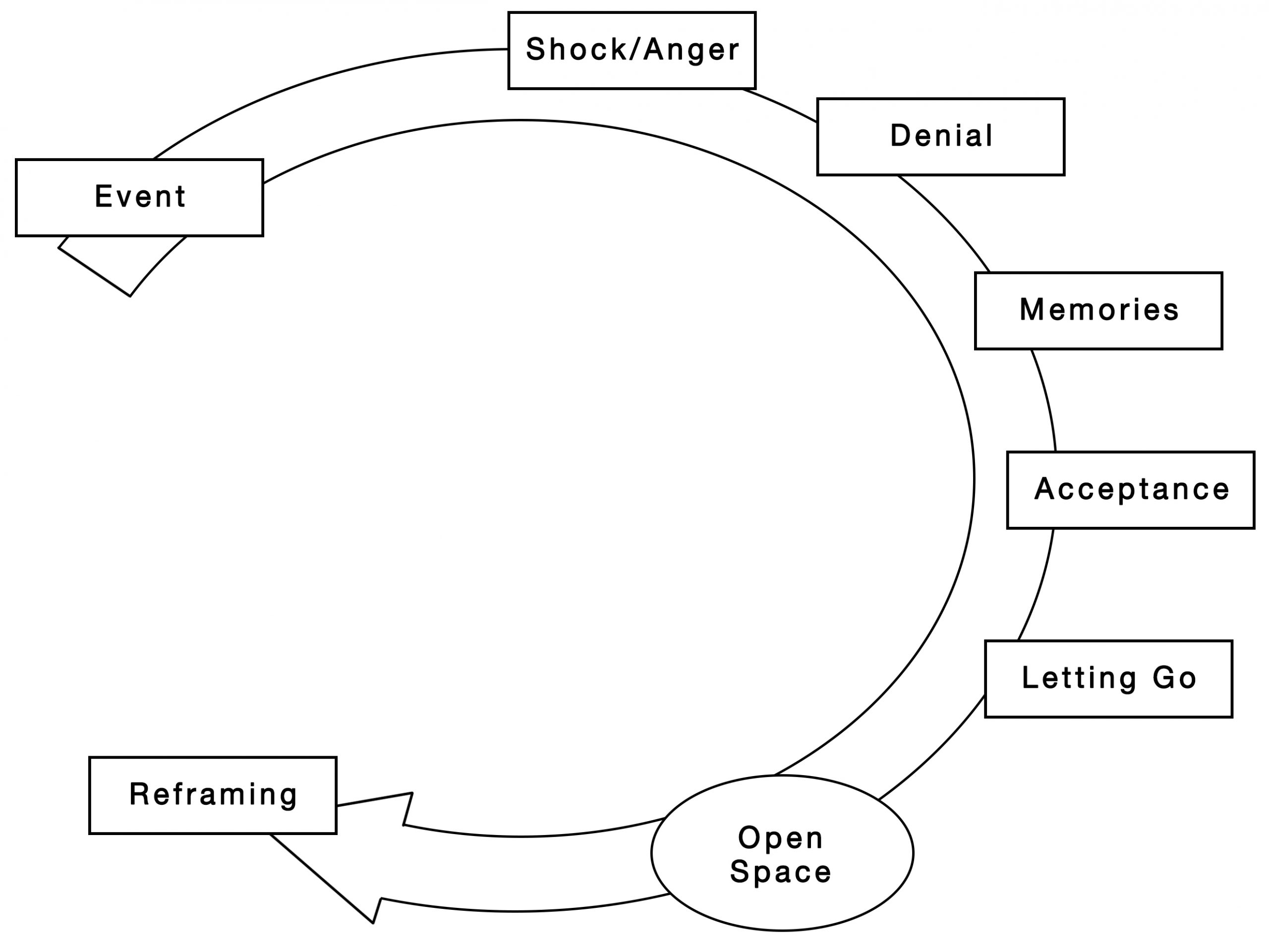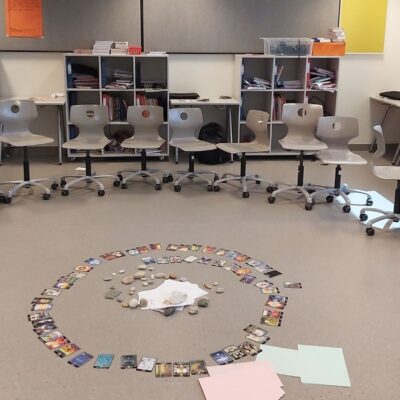
Change Is Always Accompanied by Loss Initiating the Healing Cycle of Grief Work
Grief work is part of everyday life. Change is constant and change is always accompanied by loss. When there is loss, the human being goes through a cycle of grieving before being able to move on to the future. The grieving cycle that the human goes through, part of the cycle of transformation is part of the way that humans cope with loss. Through the grief work, human beings heal, accept change, and move on. Often, in an organization, what is labeled as ‘resistance’ to change is not resistance at all but a demonstration of the stage of grieving that the person is experiencing.
Assume That Everyone Is Always Grieving About Something
In experiencing life and life within organizations (business, community, family), it is best to assume that everyone is always grieving about something. Everyone is at different stages of grief about different situations to do with work and to do with their personal lives. If you make this assumption, you are more likely to pay attention to the grieving that is going on which is likely to change some of your approaches to people and is likely to change some of your conclusions about people and their behavior. When all people within your organization are oriented to the role of grief work at work, a powerful change takes place within the organization. People become less judgmental of one another and indeed, become more compassionate. Tangible results include a reduction of conflict, increased compassion and teamwork, and reduced destructive judgment. People who become oriented to the work of grief at work report back to us that they take this knowledge home and it fosters conversations that result in improvements in family life too.
The Grief Cycle is Part of the Cycle of Transformation
In the 1980s, people studying how organizations transform recognized that what they were finding was that part of the cycle of transformation was actually the cycle of grief and that no cycle of transformation to a new higher state happened without going through the grief cycle. The model of the grief cycle that we suggest for your use was developed by Harrison Owen, creator of the meeting method Open Space Technology, based on the work of Elisabeth Kubler-Ross.

Although oversimplified, this diagram provides a view of components of the grief cycle. An event happens. I used to think that it needed to be an unhappy event because I had only read about grief work in relation to unhappy events of loss. Over the years, it has become apparent to me that any event that brings about change is an event from which grief work begins. Change, even due to a happy event, is accompanied by loss of something. Following the event, the person goes through stages including shock/anger, denial, memories, acceptance that there is no going back and then a letting go of attachment to the past.
The simple version of the grief cycle in the diagram does well in working with the grief cycle in organizations. The grief cycle begins when an event happens. It could be an event such as downsizing, the retirement of a favorite employee, or loss of a major contract. It could also be an event such as gaining a huge new contract that will triple the size of the organization, the advent of a new CEO who appears capable of leading the organization to great new success, moving to a new better building, or finding the solutions to become a healthier more balanced organization that is life nurturing in which all employees can thrive. The event could be a sad event or a happy event. Both types of events mean that change is happening, and with change, there is always loss. The loss may be of something that was treasured, or the loss may be of something that was despised. In either case, there is loss and the work of grief starts.
Simple Tips for You
Learn about the grief cycle as part of the cycle of transformation. Study it and determine how it applies in your own life and your work.
Teach others in the organization about the cycle of grief as a critical cycle to understand and to work with to achieve a healthier way of relating to one another in organizations especially during times of change—whether sad or happy change.
Pay special attention to grief cycle work following a participative meeting in which solutions were found towards change for a better future. Even though there should be great happiness as the organization achieves greater health and balance, grief work must be done because change is happening and with change comes loss—even if everyone is in agreement that what is lost is unhealthy and should be lost.
Photo by KEEM IBARRA on Unsplash
Author
-

Birgitt, as well as being a Co-owner, is a Co-founder of the Genuine Contact program. She is an international management and organizational solutions consultant, author, meeting facilitator, teacher, and executive coach. Visit her website for more information.
View all posts









Leave a Reply